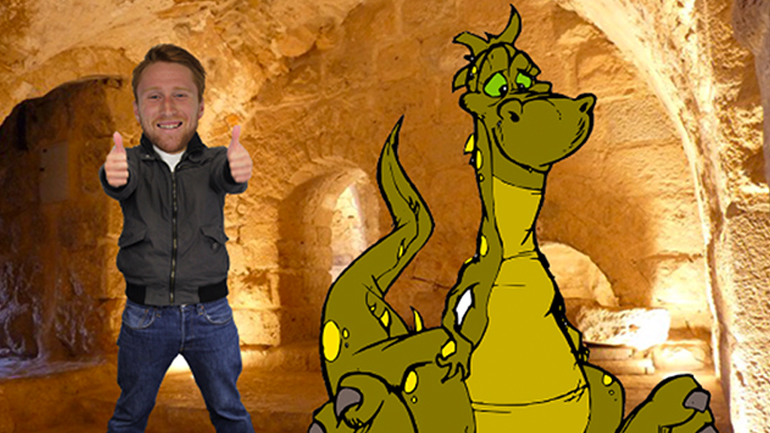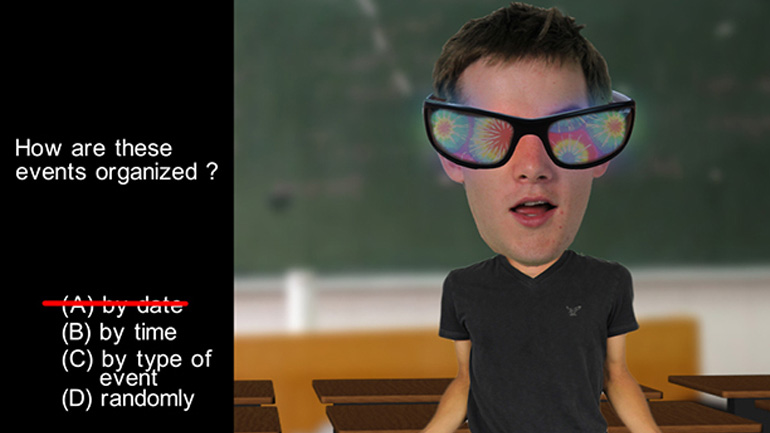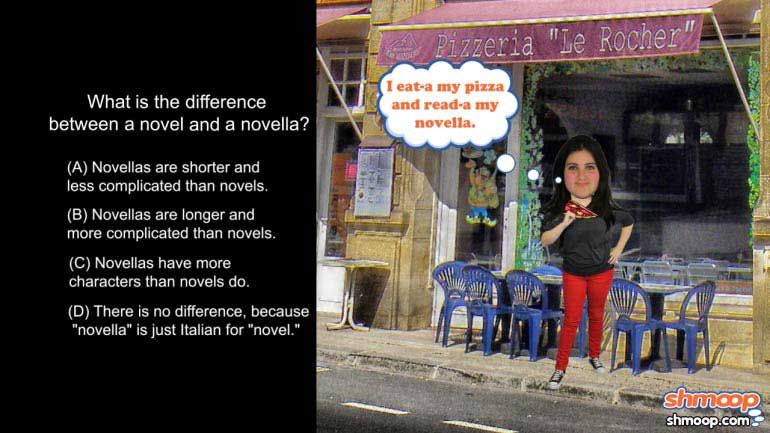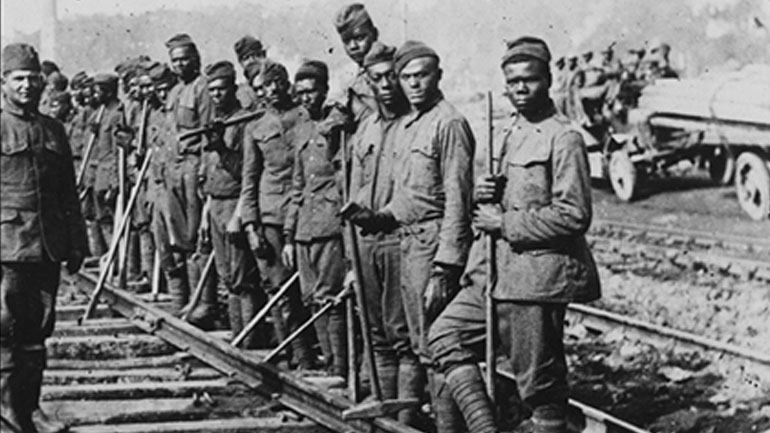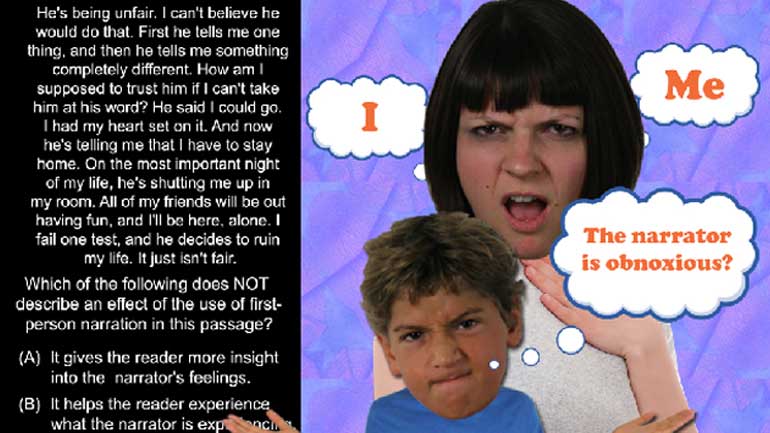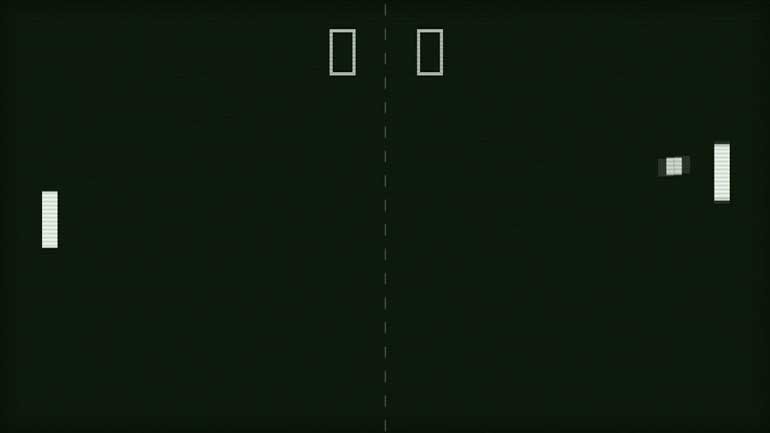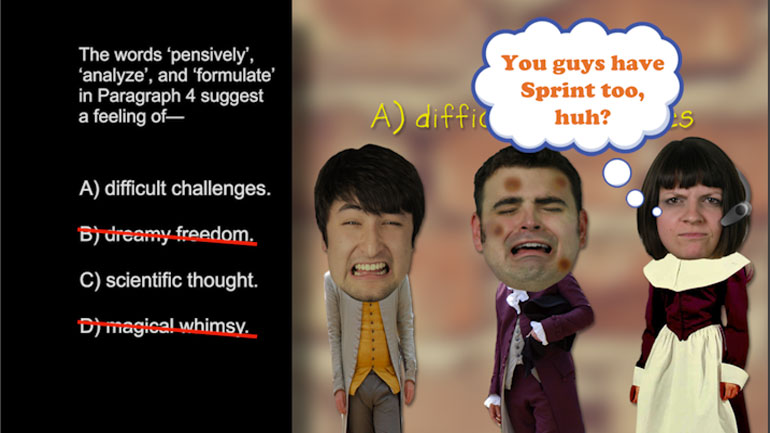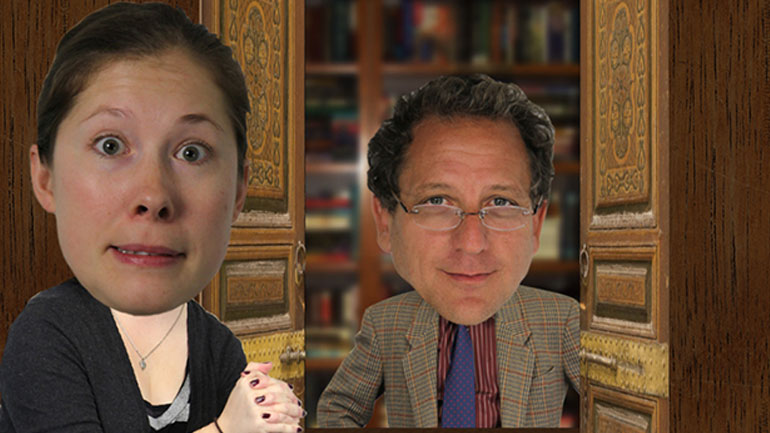ShmoopTube
Where Monty Python meets your 10th grade teacher.
Search Thousands of Shmoop Videos
CAHSEE Videos 380 videos
CAHSEE ELA 9.3 Ambiguities. Which of the following is an example of figurative language in the previous passage?
CAHSEE ELA 9.4 Ambiguities. Which of the following is not an example of symbolism?
CAHSEE ELA 9.5 Ambiguities. Which of the following statements about allegory is true?
CAHSEE ELA 9.3 Ambiguities 181 Views
Share It!
Description:
CAHSEE ELA 9.3 Ambiguities. Which of the following is an example of figurative language in the previous passage?
CAHSEE ELA 9.3 Ambiguities. Which of the following is an example of figurative language in the previous passage?
Transcript
- 00:04
Here's your shmoop du jour... Hey, this fella looks familiar... if you so
- 00:08
wish, you can hit pause and review...
- 00:10
Which of the following is an example of figurative language in the previous passage?
- 00:16
And here are the potential answers:
- 00:21
So... what is this question asking?
Full Transcript
- 00:23
What does figurative mean??
- 00:25
Uh... no... that would be a figure skater... nice figure, though.
- 00:30
Start with the semi-opposite cousin of figurative: the word LITERAL. Literal means that something
- 00:37
actually happened.
- 00:38
As in "he was literally in the very first row". So... not just ONE of the first rows...
- 00:44
LITERALLY the very first.
- 00:47
But if we said "his seats were so good he was sitting ON the ice..."
- 00:51
Now we're probably not speaking literally.
- 00:54
If we look at the 4 answer choices...
- 00:56
...it appears that C is the only one that isn't literal.
- 01:00
There are no actual, physical hopes that someone can get... up.
- 01:04
Instead, "get your hopes up" is an idiom meaning "make you hopeful."
- 01:09
So our answer is C.
- 01:10
As in, "Checking."


















